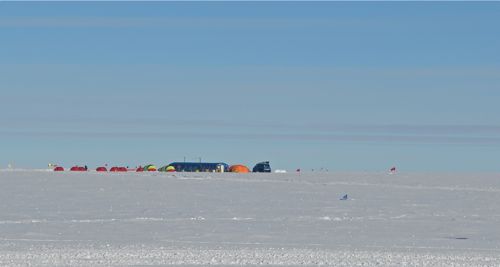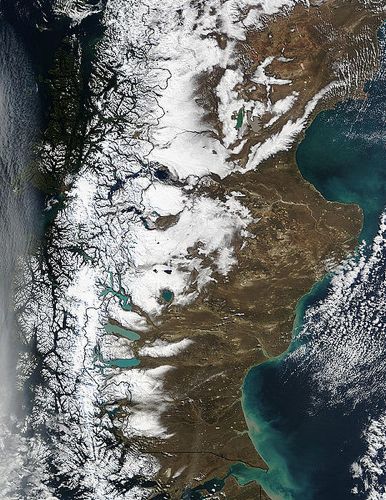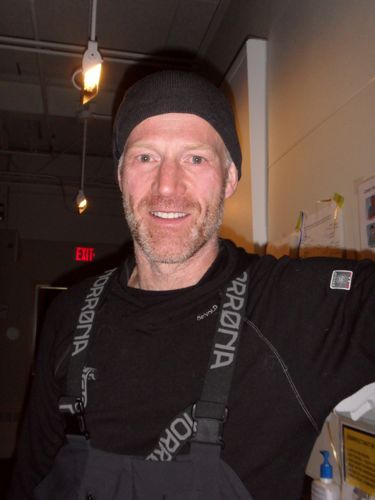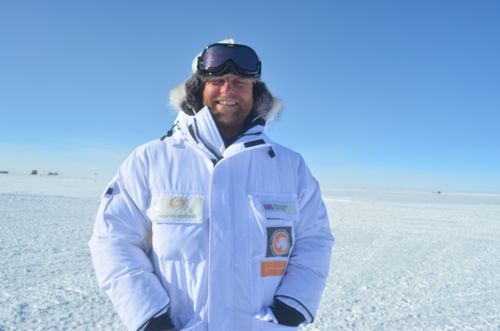I often compare my journeys to McMurdo and the South Pole with the historic explorers who arrived on skis or by foot. They suffered so much more than I have, both in how they arrived here and the accommodations they had. With the advent of the 100th year anniversary of Amundsen's arrival to the South Pole, many polar explorers have traveled to the South Pole by skis and other means. These explorers are staying in a camp on the outskirts of the South Pole Station. I had the pleasure of meeting some of them and realized that although they have better equipment and technology than the historic explorers, their experience is very similar to the historic polar expeditions.



Below are some accounts of the polar explorers I have met here.
Crossing Patagonia
The other night I watched a movie about Norwegian explorer, Borge Ousland, which documented his 500 km journey across Patagonia's southern ice field with his mountain climbing friend, Thomas Ulrich. Borge filmed the movie and presented it to us in the galley. The movie is called: "Patagonia: A travel to the end of the world."Borge and Thomas set out to cross the third largest glacier in the world (after Greenland and Antarctica) in a climate that has 300 days of precipitation. Patagonia is a region located between Argentina and Chile in South America, which has both the high peaks of the Andes Mountains as well as the Pacific Ocean.

Borge and Thomas dragged, carried and paddled kayaks that held their tents, sleeping bags, fuel, food and other supplies. They did not have any outside help during their journey. To cross the ice quickly, they skied with parasails, allowing the wind to pull them across miles of ice. Sometimes they went slower though, carrying the kayaks and supplies on their backs, dragging them through cliffs, or paddling against strong winds. While crossing the Jorge Montt GlacierA mass of ice that persists for many years and notably deforms and flows under the influence of gravity., they covered 4 kilometers in 10 hours.

Borge is a polar explorer who has made many expeditions across the Polar Regions both with teams as well as alone. As a child he was always interested in camping and the outdoors. In the late 1980s, after working as a deep-sea diver in Norway, he and his friends decided to ski across Greenland. They crossed 800 kilometers of ice in 37 days. This sparked an interest in polar exploration. He has since made two major trips to the South Pole, including a solo trip across the whole continent of Antarctica in 1997 (the first and only person to do so)! He has also skied to the North Pole and he and Thomas even retraced the steps of the famous explorer Nansen from the North Pole to Franz Joseph Land in Russia.
Skiing to the Pole

Lars Oven Pettersen is another polar explorer. He is from Norway and looked up to Borge as a youth. He always wanted to ski to the South Pole like Borge, but it was too expensive. As 2011 approached, Lars' interest in skiing to the South Pole on the 100th year anniversary of Amundsen's arrival grew. He discovered an opportunity to do so when a telecom company in Norway advertised an expedition to bring six people (three men and three women) to the South Pole in celebration of Amundsen. Lars applied along with 4,800 other people. There were several rounds of interviews to select the final six members of the expedition. Lars made it through four rounds of selections and was chosen as one of the three male skiers! He skied from 80 degrees latitude to the South Pole, covering 200 kilometers. Like Borge, he used sails on his skis, which allowed him to travel up to 15 miles per hour when there was wind. Unfortunately, there wasn't always a strong wind. Although it is in Norwegian, you can see pictures of their journey here.
Driving to the Pole

I met Hamish at the visitor center which was set up to educate tourists and explorers on the science that is happening at the pole. Hamish is part of a team that is trying to beat the world record to get to the pole from Union GlacierA mass of ice that persists for many years and notably deforms and flows under the influence of gravity. in a vehicle. The current record is 2 days, 21 hours and 21 minutes. Although they are not on skis like most of the other explorers, they are struggling with the weather and have encountered roadblocks. For example, soon after their departure, a part of their truck (the front end wishbone) broke, and they had to wait for a replacement. Despite hardships, they are still planning to make the journey and try to beat the world record! You can follow their journey here.
Questions
If you were preparing for a polar expedition, what would you bring? What would you leave at home?
Would you travel across a glacier like Borge did? Why or why not?
Math Connections
If Borge and Thomas took 10 hours to cross 4 kilometers, what was their average speed? If there are 1.62 kilometers in 1 mile, what was their speed in miles per hour?
If Lars had good winds during his 200 kilometer trek to the South Pole, allowing him to travel 15 miles per hour, how long would it take him to reach the Pole? (Hint: watch your units! the distance here is in kilometers, but the speed is in miles. You'll need to make a conversion!)

Comments